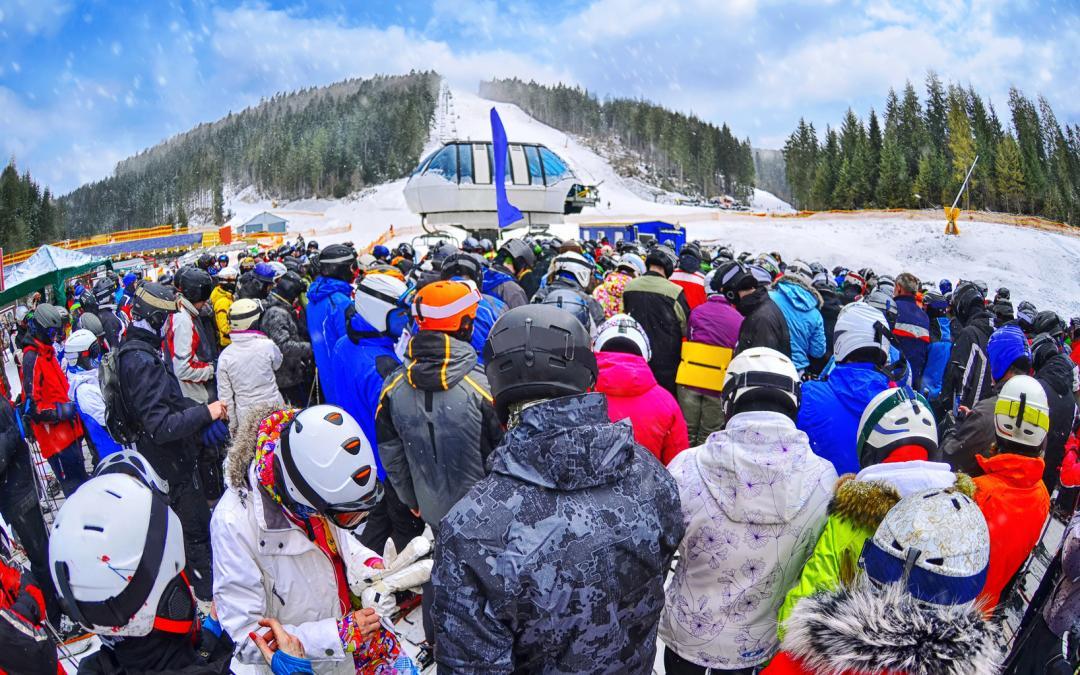Ski Lift Safety
Skiers and snowboarders love nothing more than a fun day at the slopes, but a perfect day can be ruined when safety precautions are not properly installed or followed. Although skiing injuries are not completely avoidable, accidents at the ski lift are unacceptable and typically result from poor safety strategy and guidelines.
The National Ski Areas Association (NSAA) has taken the initiative to educate young skiers and snowboarders through programs like Lids on Kids and Kids on Lifts, both of which are important for ski lift safety. However, ski resorts cannot always count on customers to stay safe and must take their own precautions.
One of the best ways to ensure skiers stay safe on ski lifts is the use of steel barriers. Steel barriers don’t offer any benefits to those aboard the lift, but they help promote safety for those preparing to board and anyone getting off at the top of the mountain.
Safety When Boarding the Ski Lift
As skiers and snowboarders prepare to board the ski lift, a few safety concerns arise. It’s important that skiers line up and wait in an orderly manner, or injuries can occur. When lines aren’t properly controlled, some visitors may cut in line and roughhousing is likely. Utilizing steel barriers to control the flow of people ensures that a queue forms and makes it easier for ski lift operators to do their jobs. It is imperative that skiers board the lift properly; a poorly controlled line increases the chances of something going awry.
Crowd control barriers can also provide value by preventing skiers and snowboarders from wandering into the path of the lift or being anywhere else that is prohibited. The last thing a ski resort needs is a collision on the lifts. Although they are sturdy and durable, steel barriers can also be easily moved, so workers can adjust them as necessary. This comes in handy when the resort is busier than usual or the lines need to be redirected.
Safety When Exiting the Ski Lift
The process for getting off the ski lift is much simpler, but there are still some safety issues to consider. Steel barriers should be used to direct those departing the lift, so they can easily know where to go and bottlenecks do not occur. Confused skiers and snowboarders could create a jam at the top of a lift, potentially creating issues for those on the lift behind them. The faster the traffic can flow, the better, and steel barriers are an excellent way to facilitate movement.
Steel barriers can also come in handy at the top of lifts to ensure skiers and snowboarders do not wander into dangerous areas of the mountain.
Using Barricade Covers and Signage for Ski Lift Safety
Sometimes, the mere presence of steel barriers isn’t enough to ensure complete ski lift safety. While the barriers do direct traffic, it would also behoove ski resorts to utilize barricade covers and other types of signage to further direct skiers and snowboarders. Instructions on how to board the lift, warnings, and other safety tips can be excellent reminders for those waiting in line. Bright colors and large fonts can also contrast nicely with the snow to really stand out.
Skiing and snowboarding aren’t always the safest sports, but there are many precautions that can be taken to ensure your ski lifts are always operating smoothly. Steel barriers are perfect for the onboarding and offboarding processes of ski lifts, and they can also be used for any other event that draws a crowd to a ski resort. Don’t wait until an incident occurs to make the switch to steel barriers; a proactive approach is the first step toward a safer establishment.
As important as steel barriers are to ski lift safety, nothing is more important than offering safety training to new skiers and snowboarders as they take lessons.


